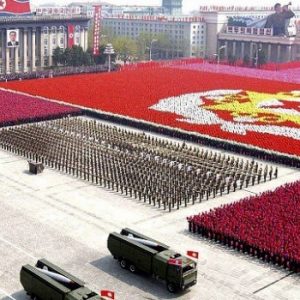According to the most recent images of North Korea’s largest prison camp, the facility is expanding its size and operations.
Curtis Melvin of the U.S.-Korea Institute at Johns Hopkins University said in a interview that Google Earth satellite imagery taken October 15th indicates that the penal labor colony known as Camp No. 16 has undergone significant changes.
Melvin said the aerial snapshots show new dams, apartments for the guards, hydroelectric power plants, an athletic field, fish farms and a mine. They are considered new because these facilities were not visible in satellite imagery from 2013.
The recent construction seems to indicate that North Korea is methodically planning for an increased number of inmates detained at Camp No. 16. It is reported that the camp is about half the size of the country’s capital, Pyongyang.
In 2014, Amnesty International released a statement that Camp No.16 holds about 20,000 prisoners and that the detainees are forced to work in very horrible conditions.
All in all, many people believe that North Korea operates five political prison camps throughout the country where the government keeps 80,000 to 120,000 prisoners for their “crimes against the state.”
Despite the visual evidence, Pyongyang has repeatedly denied that such camps exist. The country accuses defectors who survived the camps of lying in their testimonies and statements to the foreign press and to the United Nations.
Clearly, North Korea does not like analysts who try to study the regime and its dark practices.
Melvin, who conducts analyses for other developments in North Korea, said that Pyongyang’s state media website recently planted malicious and viral codes in a mandated “Flash Update” download that appears when visitors visit the website Radio Free Asia.
Melvin reported that he confirmed through a computer security program that the required download was an attempt by the state to hack into the personal computers of visitors. He further discovered that the alleged point of origin was traced to a North Korean IP address.
According to some experts, this attempt by North Korea to push malicious codes into a mandatory upgrade is not the first time the country has tried such a tactic.
Stay Connected